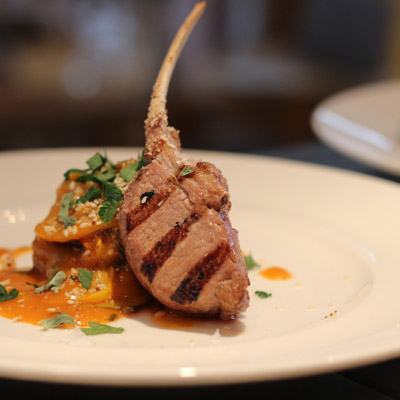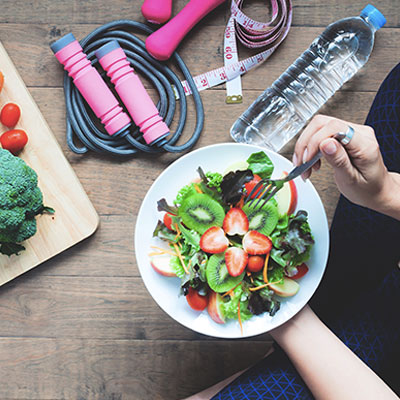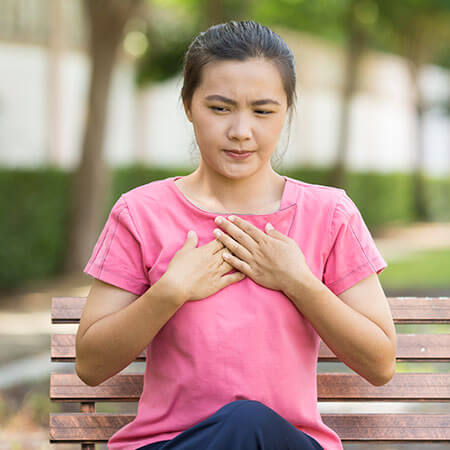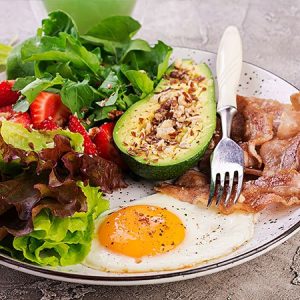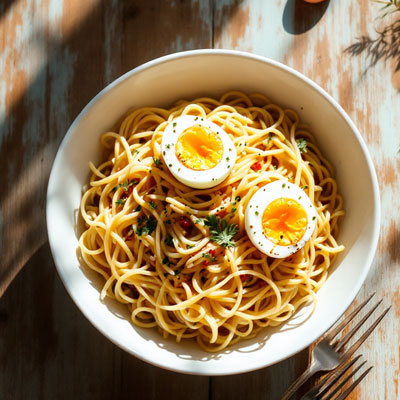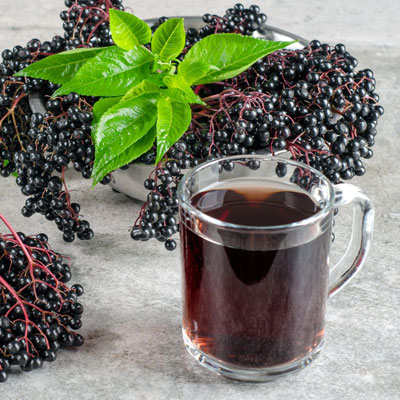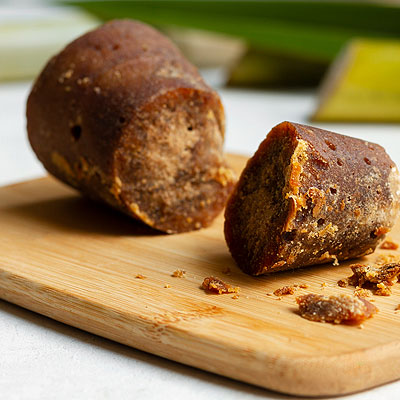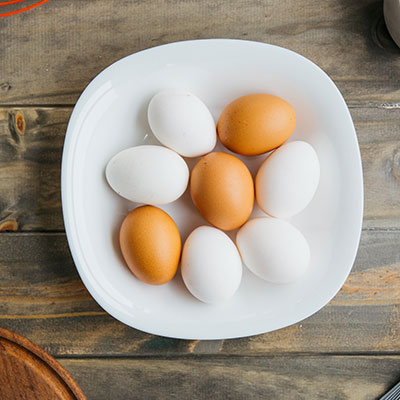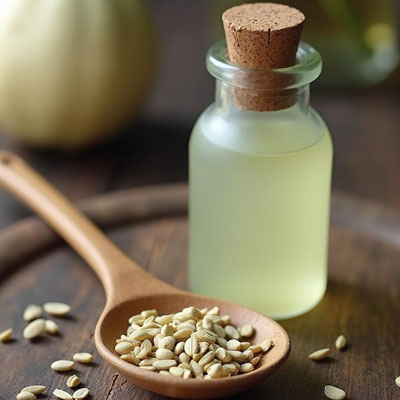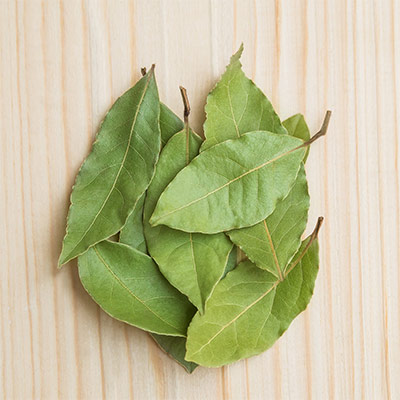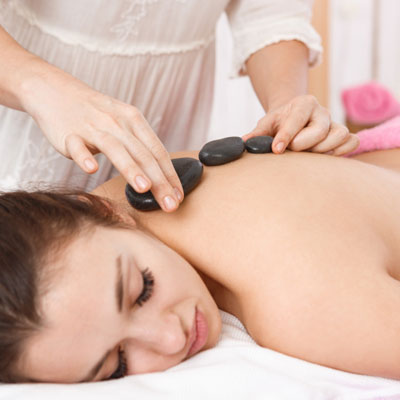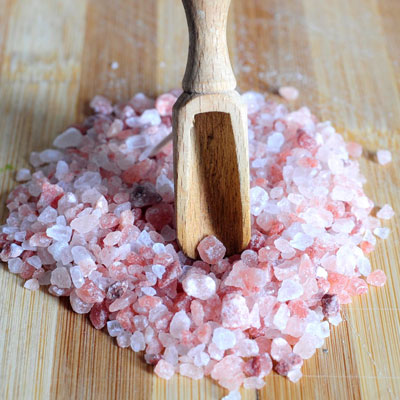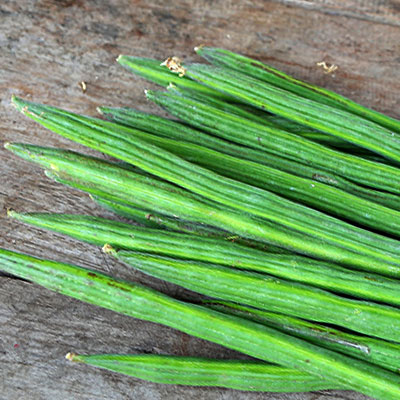Women are great at multi-tasking. From managing erratic work shifts and meeting tight deadlines to looking after the needs of family and raising children, women are known to maintain equilibrium. However, this entire work load can bring about a serious toll on women’s physical and mental health. Here we are talking about Indian women in particular. To match with the nutritional needs of their body we are presenting a well balanced diet chart for Indian Women of all age groups in this article.
Women have unique nutritional needs in each phase of their lifetime and hence living a healthy active lifestyle with balanced diet and optimum physical activity or mobility is a must. In today’s smart world, we are all accustomed to a sedentary lifestyle which is an unwanted invitation to weight gain and several lifestyle disorders. So is it possible for all the women out there to take utmost care of your health in amidst of the daily hassle in simple ways? Yes, it is! This article is about effective diet chart for Indian women to follow and achieve desirable results.
The life span of a woman is divided into certain broad age groups where the nutritional requirements vary according to each phase and is trailed as follows:
- Adolescence
- Youth or Young Age
- Middle Age
- Elderly or Old Age
Women do not need to stress over rigid instructions to maintain health. All that is needed is being disciplined in your overall lifestyle. Let’s get started with the diet recommendations for each age group based on their need for nourishment.
1. Adolescence
The transitional period from childhood to adulthood between 10 to 20 years is called Adolescence which results in various physical and mental changes which are resulted due to the influence of hormones. This phase is termed as the ‘growth period’ where final growth spurt occurs with increase in height and weight transforming a girl into a woman and hence briefing the nutritional requirements at this phase is mandatory.
Physiological changes are associated with fat deposits in women at this stage which can lead to excessive instant weight gain especially if the diet and exercise regime is not taken care of. This is the most crucial age group in terms of social pressure, self-consciousness and self imposed crash diets for weight loss. This is the phase where Menarche (first menstrual period) occurs and the body reserve nutrients should be optimum for further health maintenance. Worst eating habits are witnessed which includes skipping meals or dieting, binge eating, more screen time involvement avoiding mindful eating.
Certain dietary guidelines should be followed significantly in adolescence because it influences the nutritional status of women later in life –
- Staying in proper shape is the demand and hence an adequate well balanced nutritious diet should be consumed to avoid obesity or under nutrition.
- Enough calcium rich foods should be added to the diet for strengthening of bones and delaying the onset of osteoporosis.
- Junk foods are generally an integral part of the diet for an adolescent which is a subject of great concern. Keeping a good control over gobbling unhealthy foods and guiding them is essential that body cannot run properly on poor fuel.
- Eating habits should be independent of emotions and mindful eating should be practiced.
- Giving encouragement to perform regular physical activity especially outdoor games is immensely important. Physical activity regulates appetite.
In adolescence, the recommended dietary allowances per day should be –
- Energy: 2440 kcal
- Carbohydrates: 60-65% of the total energy
- Protein: 1.2 gms/kg body weight
- Fats: 30% of the total energy
- Calcium: 1300 mgs
- Iron: 17 mgs
- Fiber: 25 gms
Suitable division of calories into meals-
| Early morning | 40 kcal |
| Breakfast | 500 kcal |
| Mid morning | 200 kcal |
| Lunch | 800 kcal |
| Evening snacks | 200 kcal |
| Dinner | 600 kcal |
| Bed time | 100 kcal |
| Total calories | 2440 kcal |
Do not miss this article if you want to know why vegan diet is better than others!
Healthy diet chart for later adolescence –
Early Morning (6:30 to 7:00 am)
Aloe vera Juice- 1 glass of 200 ml
OR
Apple cider vinegar- 1 to 2 tablespoons in 200 ml of water
OR
Lukewarm lemon water- 1 glass of 200 ml
AND
Walnuts- 2 pieces
OR
Figs- 2 pieces
Breakfast (8:00 to 9:00 am)
Muesli with low fat yoghurt and fresh fruits (no sugar)- 1 bowl of 300-350 ml
OR
Multigrain toasts with boiled or poached eggs- 2 toasts and 2 egg whites
OR
Oats porridge with honey and cinnamon- 1 bowl of 300-350 ml; 1 teaspoon of honey and a pinch of cinnamon
OR
Tofu methi stuffed paratha- 2 paratha with low fat yoghurt- 1 small bowl of 200 gms
OR
Curd rawa upma with seasonal vegetables- 1 bowl of 300-350 gms
Mid morning (11:00 am to 12:00 pm)
Apple chia seeds smoothie- 1 glass of 200 ml
OR
Mixed fruit salad- 1 small bowl of 200 gms
OR
Low fat Yoghurt with fruits- 1 small bowl of 200 gms
Lunch (1:30 to 2:30 pm)
Bowl of salad with tossed seasonal vegetables- 1 small bowl of 100 gms
WITH
Namkeen Dalia with vegetables (peas, carrots, beans, capsicum, coriander leaves)- 1 bowl of 300-350 gms and low fat yoghurt (without sugar)- 1 bowl of 150 gms
OR
Brown rice with peas- 200 gms and soyabean curry- 1 bowl of 150-200 gms
OR
Grilled chicken breasts- 200 gms with grilled veggies (mushrooms, broccoli, capsicums, corns, onions)- 100 gms
OR
Millet idli or millet dosa- 3 servings with sambhar- 1 bowl of 200-250 ml
OR
Multigrain roti- 3 pieces and low fat paneer and peas curry- 1 bowl of 250 gms
Evening snacks (5:00 to 5:30 pm)
Whole grain pancakes topped with fruits- 1 serving
OR
Grilled vegetable & tofu or chicken brown bread sandwich- 1 serving
OR
Spinach, corn and cheese tortilla wraps- 2 servings
OR
Sprouts salad (with added cucumbers, onions, tomatoes, corn, avocados, dash of lime)- 1 small bowl of 150-200 gms
(6:00 pm)- Green tea (no sugar)- 1 cup of 150 ml
Dinner (8:00-9:00 pm)
Sattu roti- 2 pieces with mixed vegetable curry-1 bowl of 250-300 gms
OR
Brown rice with spinach- 200 gms with soyabean dal- 1 bowl of 250 gms and onion-cucumber salad- 50 gms
OR
Tomato or sweet corn or chicken soup- 1 bowl of 350 ml with stir fry veggies- 1 bowl of 150-200 gms
OR
Dalia and moong dal khichdi- 1 bowl of 300-350 gms with skimmed curd- 1 bowl of 200 gms
OR
Whole wheat pasta or spaghetti with fresh vegetables (with added cherry tomatoes, beans, carrots, mushrooms, broccoli, corns, onions, zucchini, bell peppers)
Bed time (10:30-11:30 pm)
Toned almond milk- 1 cup of 300 ml
Did you know you can control PCOD with the help of diet and lifestyle changes?
2. Youth or young age
A wide range of nutrients is required by women to perform various vital functions in this particular age group of between 20-30 years. Though there is no growth, nutrients are required for energy, for maintenance of body functions and for replacement of wornout tissues during adulthood. This phase is most susceptible to get hold of lifestyle disorders or health malfunctioning as the busy schedule makes women to neglect their own dietary needs.
Maximum amount of calcium is absorbed in the women’s body in their youth stage to help achieve peak bone density and reserves of calcium in the body for further use. The dense need for proper nutrition among pregnant and lactating women in this decade should be satisfied by consumption of functional foods and acquiring a positive mindset.
Hey did you know, you can beat Thyroid with diet plan?
Certain following tips should be followed to maintain an effective dietary pattern in young women:
- Maintaining efficient co-ordination between work life, personal life and health is of utmost importance to avoid stressful situations which might lead to poor dietary consumptions.
- Daily exercise routine and regular initiatives to keep your body at motion are the key for weight maintenance and an active mindset.
- Feasting and fasting should be avoided. Not eating anything for days based on religious factors and otherwise eating all lavish can be strenuous for the body to adjust.
- Inclusion of predominantly non-vegetarian, highly processed, high fat diet can promote weight gain.
- Women who are mostly engaged with household chores throughout the day, gets less time for mindful eating and often end on gobbling food at irregular timings. Such practices should be put to halt.
In young women, the recommended dietary allowances per day should be –
- Energy: 1875 kcal
- Carbohydrates: 60% of the total energy
- Protein: 1 gm/kg body weight
- Fats: 25% of the total energy
- Calcium: 1000 mgs
- Iron: 19 mgs
- Fiber: 25 gms
Suitable division of calories into meals-
| Early morning | 80 kcal |
| Breakfast | 445 kcal |
| Mid morning | 150 kcal |
| Lunch | 500 kcal |
| Evening snacks | 250 kcal |
| Dinner | 400 kcal |
| Bed time | 50 kcal |
| Total calories | 1875 kcal |
Healthy diet chart for young aged women-
Early Morning (6:30 to 7:00 am)-
Lukewarm lemon water- 1 glass of 200 ml
OR
Ginger lemon water- 1 glass of 200 ml
OR
Cucumber mint detox drink- 1 glass of 200 ml
WITH
Roasted mixed seeds (chia seeds, flax seeds, pumpkin seeds, sunflower seeds)- 5 to 10 gms.
OR
Mixed dry fruits- 10 gms
Breakfast (8:30 to 9:00 am)-
Methi paratha (no oil)- 1 piece with skimmed curd- 1 bowl of 200 gms
OR
Vegetable oats- 1 bowl of 250-300 gms and skimmed milk- 1 glass of 250 ml
OR
Muesli in toned milk with fruits and nuts- 1 bowl of 250-300 ml
OR
Soya chilla- 1 piece and skimmed curd- 1 bowl of 200 gms
OR
Oats idli- 2 pieces and sesame coconut chutney- 1 tablespoon (15 gm)
Mid Morning (11:00 am to 11:30 am)-
Coconut water- 1 glass of 200 ml
OR
Digestive biscuits- 2 pieces
OR
Sprouted lentil salad- 1 bowl of 100 gms.
WITH
1 seasonal fresh fruit
Lunch (1: 30 to 2:00 pm)-
Mixed green salad with cucumbers, tomatoes, onions, beetroot, carrots- 1 small bowl of 50-100 gms
WITH
Whole grain chapati (no fat or oil added)- 2 pieces and Bittergourd/bottlegourd/pointed gourd sabji- 1 bowl of 250 gms
OR
Brown rice vegetable pulao- 150 gms and cucumber raita- 1 bowl of 150 gms.
OR
Besan roti- 2 pieces and mixed vegetable curry- 1 bowl of 250 gms
OR
Multigrain fulka -2 pieces and grilled chicken curry- 1 bowl of 250 gms.
OR
Vegetable stuffed roti- 2 pieces and egg white curry- 1 bowl of 200 gms.
Evening Tea Time (4:30 pm)-
Green tea (no sugar)- 1 cup of 100-150 ml
OR
Skimmed milk tea (no sugar)- 1 cup of 100-150 ml
OR
Lemon tea (no sugar)- 1 cup of 100-150 ml
Evening Snacks (5:30 pm)-
Paneer veggie wrap- 1 serve
OR
Dholka- 2 pieces with coriander chutney- 2 teaspoons (10 gms)
OR
Sauteed mixed sprouts and boiled soyabean chat- 1 bowl of 100-150 gms
OR
Baked hara bhara kabab- 2 sevings with mint chutey- 2 teaspoons (10 gms)
Dinner (8:30 to 9:00 pm)-
Mixed salad with dash of lime- 1 bowl of 75-100 gms
WITH
Vegetable and soya chunks rice- 150 gms and kidney beans curry- 1 bowl of 200 gms
OR
Spinach rice- 150 gms and moong dal or lentil curry- 1 bowl of 250 gms
OR
Multigrain roti- 1-2 pieces and Kadhi- 1 bowl of 200-250 gms
OR
Onion, tomato and mushroom soup- 1 bowl of 300-350 ml
OR
Whole grain roti- 1-2 pieces and low fat dahi chicken- 1 bowl of 200-250 gms
Bed Time (10:30 pm)
Chia seeds with water- 200 ml
OR
Chia seeds with skimmed milk- 200 ml
OR
Toned milk with fig- 200 ml
Here is a useful guide about what to eat and what not during pregnancy.
3. Middle age
The nutritional status is observed with various physiological, psychological and immunological changes after the age of 30 which marks the onset of middle age and continues till the age of 50 where the overall energy requirement is found to decrease gradually. However, the requirements for proteins, carbohydrates, vitamins and minerals are not found to diminish.
The metabolic rate and nutritional requirements changes at a considerable rate in middle aged women. Women, who undergo the phase of pregnancy and lactation during their middle age, are more susceptible to gain weight due to biological reasons and disturbed body clock. Their dietary patterns should be strictly monitored. Also, regular physical activity benefits with balance, flexibility, muscle strength and especially with stress management at this particular age group.
Few pointers based on dietary regime should be monitored by women in their middle age as noted below:
- Housewives should keep a check on their tendency of continuously nibbling in between meals which makes them consume more calories than they burn.
- Emotional eating amongst middle aged women is common. They do not follow the internal hunger signals and rather respond to external cues while eating.
- Consuming snacks regularly and cravings for all the junk food (primarily consisting of high carbohydrates and fats) is another major cause for weight gain or inefficiency in maintaining the optimum weight.
- Social gatherings and several cultural occasions are often practiced by women; which ultimately contributes to excess calorie consumption towards the end of the day.
- It is often witnessed that consuming foods rich in sugar including chocolates, bakery products and sweetened beverages often brings relaxation to mood swings or anxiety in women. Combining such behavioral pattern with dietary pattern should be forbidden.
In middle age, the recommended dietary allowances per day should be-
- Energy: 1714 kcal
- Carbohydrates: 50-55% of the total energy
- Protein: 1 gm/kg body weight
- Fats: 20% of the total energy
- Calcium: 1000 mgs
- Iron: 30 mgs
- Fiber: 25 gms
Suitable division of calories into meals-
| Early morning | 80 kcal |
| Breakfast | 400 kcal |
| Mid morning | 150 kcal |
| Lunch | 434 kcal |
| Evening snacks | 200 kcal |
| Dinner | 400 kcal |
| Bed time | 50 kcal |
| Total calories | 1714 kcal |
Healthy diet chart for middle aged women-
Early Morning (6:30 to 7:00 am)-
Lukewarm amla water- 1 glass of 200 ml
OR
Lemon ginger water- 1 glass of 200 ml
OR
Lime juice (no sugar) – 1 glass of 200 ml
WITH
Roasted mixed seeds (chia seeds, flax seeds, pumpkin seeds, sunflower seeds)- 5 to 10 gms
OR
Soaked almonds- 5 pcs
Breakfast (8:30 to 9:00 am)-
Skimmed milk- 1 glass of 250 ml
WITH
Oats porridge with toppings of fruits like apple and banana (no sugar)- 1 bowl of 300 ml
OR
Brown bread sandwich with boiled and strained soy granules, slices of cucumber, tomatoes and lettuce- 1 set; 2 slices
OR
Vegetable poha with peas, carrots, onions, corns and curry leaves- 1 small bowl of 200 gms
OR
Suji idli- 2 pieces with Coconut chutney- 1 tablespoon (15 gms)
OR
Oats and besan cheela (without oil)- 1 serving and Til chutney- 1 tablespoon (15 gm)
Mid Morning (11:00 am to 11:30 am)-
Coconut water- 1 glass of 200 ml
OR
Low fat buttermilk- 1 glass of 200 ml
WITH
1 medium sized fruit
Lunch (1: 30 to 2:00 pm)-
Yogurt- ½ cup of 125 gms
Tossed green salad with cucumbers, tomatoes, onions, beetroot, carrots- 1 small bowl of 75 gms
WITH
Multigrain roti (no fat or oil added)- 1 piece and Mixed vegetable curry (preferably seasonable vegetables)- 1 small bowl of 150 gms
OR
Brown rice- 150 gms and Boiled dal with bottle gourd- 200 gms
OR
Multigrain roti (no fat or oil added)- 1 piece and Tofu curry- 200 gms
OR
Brown rice- 150 gms and Grilled fish curry- 200 gms
OR
Khichdi (prepared from brown rice and yellow dal preferably) with tomato, peas and carrots- 1 small bowl of 250 gm
Evening Tea Time (4:30 pm)-
Green tea (no sugar)- 1 cup of 100-150 ml
OR
Skimmed milk tea (no sugar)- 1 cup of 100-150 ml
Evening Snacks (5:30 pm)-
Sugar free fiber biscuits- 2 pcs
OR
Whole wheat fruit pancakes- 1 serve
OR
Puffed rice with sprouts, onions, tomatoes and a dash of lime- 1 small bowl of 100 gms
OR
Methi khakra- 2 pcs
OR
Boiled soyabean and chickpea salad- 100 gms
Dinner (8:30 to 9:00 pm)-
Mixed green salad with onion, radish, carrots, tomatoes, cucumbers, sprouts- 1 small bowl of 75 gms
WITH
Roti (no oil)- 1 piece and Egg white curry- 1 small bowl of 150 gms
OR
Minced chicken stew- 1 bowl of 300 gms
OR
Vegetable Pulao (prepared from brown rice) with cauliflower, peas, capsicum and soya chunks- 1 bowl of 250 gms
OR
Nourishing soup incorporating oats, tomatoes, beetroot, bottle gourd, corns, onions and kidney beans- 1 bowl of 300 ml
OR
Roti (no oil)- 1 piece and low fat paneer & spinach curry- 1 small bowl of 150 gms
OR
Broken wheat upma with peas, carrots, capsicum, coriander leaves and dash of lime- 1 bowl of 250 gms and Yogurt- ½ cup of 125 gms
Bed Time (10:30 pm)
Chia seeds with water- 200 ml
OR
Chia seeds with skimmed milk- 200 ml
Meanwhile you may also want to take a look at what is GM diet plan for weight loss?
4. Elderly or Old Age
Ageing is a biological process starting from the age of 50 which brings along several physiological, psychological and immunological changes influencing the nutritional status. Good nutrition may slow the ageing process in women by avoiding disease, engagement to life with maintenance in regular physical activities and cognitive function. Fatigue, restricted body movements, tooth loss, organs disfunctioning, alteration in appetite are the common complaints during old age affecting the nutrient status in a negative way.
Goal of nutritional care is primarily to help the aged achieve an independent, purposeful and healthy living. Due to reduction in physical activity, the metabolic rate decreases affecting the overall energy needs. Deposition of fat is observed the most during this span with reduced percentage of muscle tissue and increased fat tissues in the body.
An effective diet can aid poor sleep, hot flash, negative metabolism and bone density experienced as the consequence to menopause (natural transition that brings an end to menstrual cycle) in women of this age group. The requirements for the nutrients remain the same but inefficient intake of food may lead to several deficiencies. Hence, taking utmost care of body needs in the elderly phase is necessary.
Some dietary tips are essential to be noted down while preparing the diet plan for elderly women to maintain maximal caution:
- Calorie dense and empty calorie foods should be avoided for better digestibility in women.
- Soft well cooked and easily digestible foods are preferable with limitation to saturated fat as it promotes weight gain.
- Minimum of five servings of antioxidants and fiber rich fruits and vegetables should be ideally added to the diet.
- Foods prepared with less salt, spices and condiments should be opted with avoidance to fried and concentrated food consumption taken for mood upliftment.
- To combat hair loss, impairment of vision, improper digestion and tissue inflammation in women, omega 3 fatty acids rich foods including sea foods, flax seeds, chia seeds, walnuts, tofu, sprouts, avocados should be essentially added to the diet.
In elderly women, the recommended dietary allowances per day should be-
- Energy: 1477 kcal
- Carbohydrates: 50% of the total energy
- Protein: 1 gm/kg body weight
- Fats: 20% of the total energy
- Calcium: 1000 mgs
- Iron: 18 mgs
- Fiber: 25 gms
Suitable division of calories into meals-
| Early morning | 80 kcal |
| Breakfast | 347 kcal |
| Mid morning | 150 kcal |
| Lunch | 400 kcal |
| Evening snacks | 150 kcal |
| Dinner | 300 kcal |
| Bed time | 50 kcal |
| Total calories | 1477 kcal |
Here is a complete guide about the benefits of a Low Sodium Diet.
Healthy diet chart for old aged women-
Early Morning (6:30 am)-
10 minutes of coconut oil pulling upon waking up
(7:00 am)-
Lukewarm water- 1 glass of 200 ml
Breakfast (8:30 to 9:00 am)-
Vegetable and sprouts poha – 1 bowl of 200 gms
OR
Ragi idli or ragi dosa- 2 servings with tomato and coconut chutney-1 tablespoon (15 gms)
OR
Egg white omelets with roasted vegetables (any seasonal fresh vegetables)- 2 servings
OR
Palm sized oats chillas- 2 servings with coriander chutney- 1 tablespoon (15 gms)
OR
Oatmeal porridge in skimmed milk- 1 bowl of 250-300 gms
Mid Morning (11:00 am to 11:30 am)-
Coconut water- 1 glass of 200 ml
WITH
1 seasonal fresh fruit
&
Roasted mixed seeds (chia seeds, flax seeds, pumpkin seeds, sunflower seeds)- 5 to 10 gms.
Lunch (1: 30 to 2:00 pm)-
Fresh green salad with cucumbers, tomatoes, onions, beetroot, carrots and dash of lime- 1 small bowl of 50 gms
WITH
Jowar roti (no oil or fat added)- 2 pieces and pumpkin and gourd sambhar- 1 bowl of 250 gms
OR
Millet rice- 100 gms and mixed vegetable gravy- 1 bowl of 250 gms.
OR
Multigrain roti- 2 pieces with lentil curry- 1 bowl of 150 ml and sprouts and chickpea sabzi- 1 bowl of 100 gms
OR
Brown rice with sesame and vegetables- 150 gms and grilled fish curry- 1 bowl of 250 gms
OR
Millet and dal Khichadi- 1 bowl of 250 gms with skimmed curd- 150-200 gms
Evening Tea Time (4:30 pm)-
Green tea (no sugar)- 1 cup of 100-150 ml
OR
Lemon tea (no sugar)- 1 cup of 100-150 ml
WITH
2 digestive biscuits
Evening Snacks (5:30 pm)-
Roasted makhanas- 30 gms
OR
Roasted homemade chivda- 50 gms
OR
Rice puff bhel (without sev/puri; add dates chutney, cucumbers, tomatoes, cucumbers, onions) – 80 gms
Dinner (8:30 to 9:00 pm)-
Mixed salad bowl- 50 gms
WITH
Spinach soup/pumpkin soup/onion and green peas soup (with dash of ginger-garlic)- 1 bowl of 300 ml
OR
Egg white(2 pieces) and stir fry vegetable scramble- 250 gms
OR
Tofu veggie stir fry- 250 gms
OR
Mix Vegetable Stew or Minced Chicken Stew- 1 bowl of 300 ml
OR
Vegetable dalia pulao- 250 gms
Bed Time (10:30 pm)
Warm toned milk- 1 glass of 250 ml
To conclude, women at all age groups should keep a regular check on their outright diet, physical activity and stress levels as they go hand in hand to maintain body’s optimum health. Nutrition is the cornerstone of health & well being and hence following appropriate dietary pattern regularly with the above mentioned Diet Chart for Indian Women can benefit them in each phase of their lifetime.
If you have any questions or doubts about the diet plan then please feel free to ask us in the comment section below and we will be happy to answer them. Also please do not forget to share this useful article with your friends and family on social media.
Thanks and have a great day!

